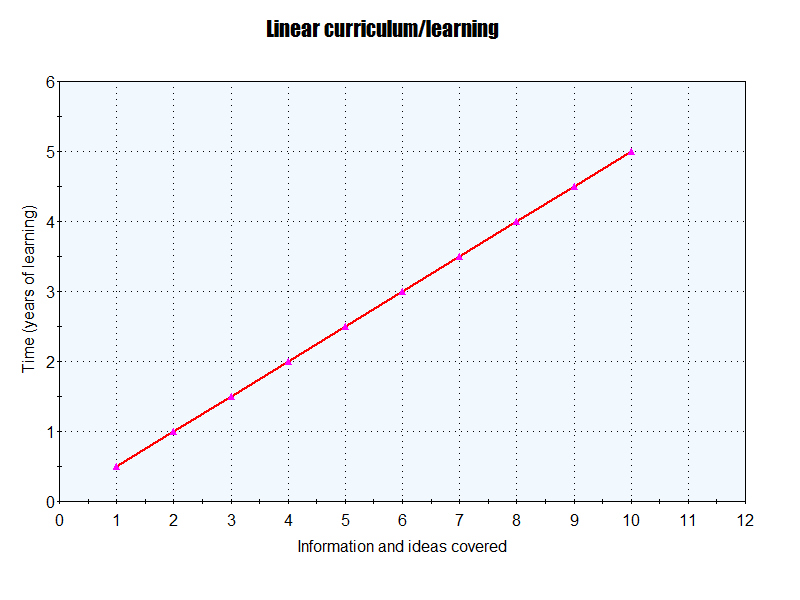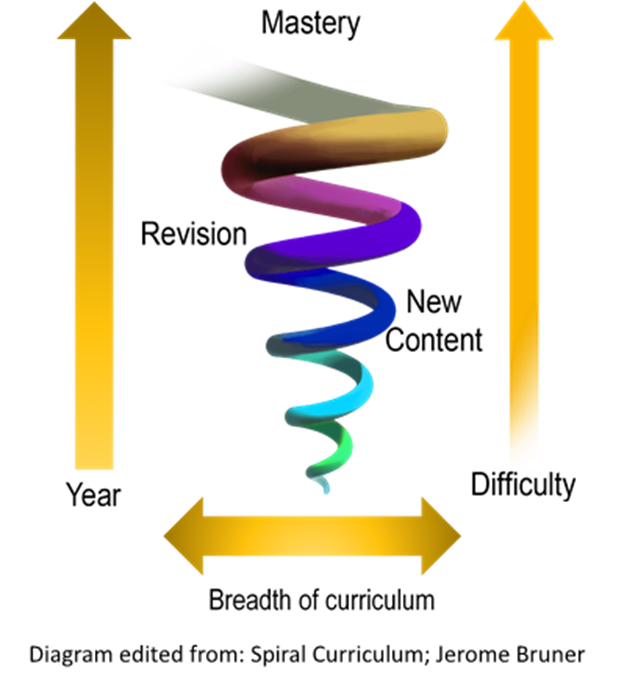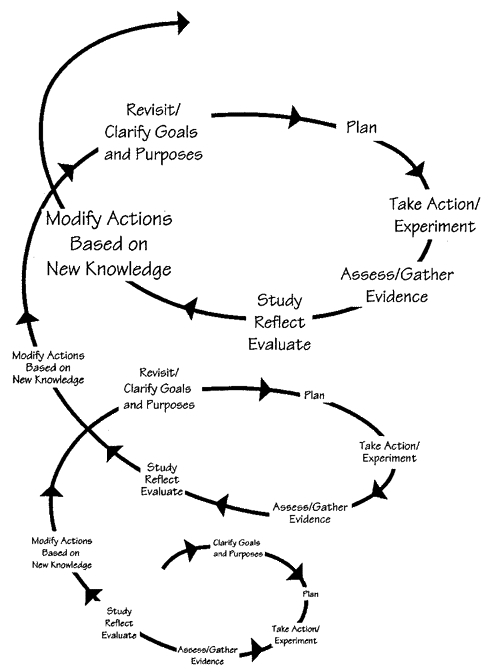Allan House writes
A spiral curriculum better matches with current understanding of how language is learned. Language can’t be broken down into discrete blocks which are independently masterable, revision is key to mastering items and skills and new vocabulary, learners will not truly learn a grammar point they are not ready for. They will only master a grammar form [or any topic] when they are at the right point in their learning. The repetition inherent in a spiral curriculum better allows for the above.
Learners come in with differing levels of language mastery, and jagged learning profiles. With a linear curriculum they may have missed some points which won’t be covered again. A spiral curriculum allows for revision of previously covered points, which also allows those with gaps to catch up in areas they are weaker in.
Robert Kaiser writes
Here is a visualization of linear learning. Each month, each year, we cover certain topics. In this lineal model we don’t come back to those topics again as time passes by. Rather, as time goes by we cover only new topics. The implicit assumptions here are:
* that everyone really learns – and learns well – the material the first time that they are exposed to it
* When learned encounter new material, they remember and understand the older material that this newer material depends on.
Yet good teachers understand that both of these assumptions are wrong.
For any topic in science (and also history, and ELA) students should instead cover content and skills in a spiraling fashion: They would start by being introduced to basic ideas in elementary school, at a level appropriate to their comprehension levels at the time.
Students must then be reintroduced to most of the same ideas in middle school, yet now at a deeper level. This time with more nuance, more facts. For some topics, with more mathematics. More sophisticated examples and more discussions. During this time we now include new topics that weren’t covered previously.
For those students taking high school classes, such as physics, chemistry, mathematics, they again should cover the same topics, but this time with more math, a richer set of examples, and of course newer material. Here is a visualization of how a spiral curriculum works:
Here is another such visualization.
As science teachers in high school we often have no control over elementary and middle school education, and often even little or no say in the overall curriculum of our own high schools. But if people would just listen to us teachers then they’d know we have a better way to teach science over time, this kind of teaching.
Thanks for visiting my website. We also have resources here for teachers of Astronomy, Biology, Chemistry, Earth Science, Physics, Diversity and Inclusion in STEM, and connections with reading, books, TV, and film. At this next link you can find all of my products at Teachers Pay Teachers, including free downloads – KaiserScience TpT resources



